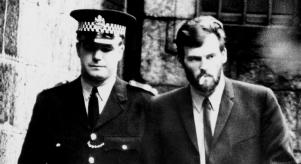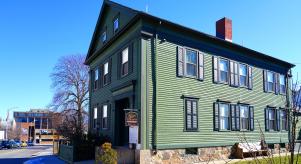
Why Hillsborough Was a Crime
In 2016, the deaths of the Liverpool fans in the Hillsborough disaster were officially included in the UK national crime statistics. This was a momentous turn of events, coming decades after a catastrophe once regarded as an accident triggered by the behaviour of anarchic fans. Thanks to an epic, two-year inquest which ended in 2016, the truth was finally out: the Hillsborough victims had been unlawfully killed, and David Duckenfield – the senior police officer charged with maintaining safety on the day of the match – could be guilty of manslaughter.
The day of the disaster, 15 April 1989, was a fine, sunny one – ideal conditions for an exciting clash between Liverpool and Nottingham Forest in the FA Cup semi-final. Witnesses later described the joyous, carnival-like atmosphere outside Hillsborough stadium, even as a bottleneck began to develop outside the Liverpool end of the stadium. There simply weren’t enough turnstiles to cope with the sheer numbers of people eager to get to the terraces ahead of kick-off.
Up to 1989… we got away with it
The situation at the turnstiles rapidly worsened, with fans crammed tightly enough to panic the few police officers who found themselves utterly overwhelmed by the surging river of people around them. One officer radioed the police control room in the stadium, warning that someone was going to get killed if something wasn’t done to relieve the pressure. Indeed, during the inquest, one former officer described the area around the turnstiles as a known potential “death trap”. “Up to 1989… we got away with it,” he said.
And so, on that day in 1989, David Duckenfield made a fateful decision. He ordered the opening of a large exit gate – the now-infamous Gate C. In a matter of minutes, thousands of fans surged into the stadium, specifically pens 3 and 4, which were fenced off at the front. Already busy at that point, the pens became the scene of an excruciating and deadly crush. People were literally asphyxiated where they stood. The final death toll would be 96.
From the very beginning, a false mythology was created around the disaster, with the blame being put on “tanked-up yobs” (to quote Margaret Thatcher’s own press secretary). Even as the bodies of their loved ones lay in a makeshift mortuary, the families were interrogated on the victims’ drinking habits. Blood alcohol tests were conducted on the corpses, and the results published in newspapers. Early media reports cast the Liverpool fans as the villains of the piece. They were, according to these stories, drunken hooligans whose behaviour caused the deadly crush. There were even shocking accounts of fans urinating on police officers and stealing from the dead. None of this was true.
Yet the claims suck. Even after an early inquiry, the Taylor Report, confirmed that the actual reason for the disaster was a total “failure of police control”, not to mention inadequate safety procedures at the stadium, no single person was held accountable, and the families of the victims had to endure the tarnishing of their loved ones’ names.
The dishonesty wasn’t limited to media hacks spinning stories that libeled the dead. By his own later admission, David Duckenfield told an outright lie about the opening of Gate C, claiming instead that the fans had forced the gate open. In the final inquest, Duckenfield said he would regret the lie to his dying day.
On top of all this, the witness statements by police officers present in the stadium were later altered, censored and generally manipulated. In the words of the Hillsborough Independent Panel, set up to analyse the truth of what happened, this was all part of “strenuous attempts” by South Yorkshire police to deflect the blame for the catastrophe away from themselves and onto the fans.
It has taken decades of persistence by the Hillsborough family members to have the deaths of their loved ones recognized as unlawful rather than accidental. A shocking number of bad decisions were made on that day – not least the failure to cordon off the tunnel that led to pens 3 and 4. Pouring through Gate C, the fans quite naturally made their way down this tunnel to the dangerously crammed pens, when usual practice was to have police divert them to less crowded areas. Duckenfield also decided against delaying the match kick-off, which would have lessened the anxiety and panic at the turnstiles, and given the police more to manage the influx. Instead, as the match began at the scheduled time, “the crowd cheered but already in the central pens people were screaming” – in the haunting words of the Hillsborough Independent Panel report.
The crowd cheered but already in the central pens people were screaming
In 2017, following the results of the inquest, it was announced that a group of men are finally to face the courts on charges relating to that day. Among them are Graham Mackrell, who was in charge of safety at Hillsborough, and top cop Sir Norman Bettison, accused of misconduct in a public office, due to his alleged role in shunting blame onto the fans.
The man facing the most serious charges is David Duckenfield, who is accused of gross negligence manslaughter. However, he has yet to be formally charged, as he is protected by a legal bar on further prosecution, which was imposed by a judge following a failed private prosecution back in the year 2000. Legal wranglings are now underway to see if the bar can be lifted. Could justice finally be served for the 96?




